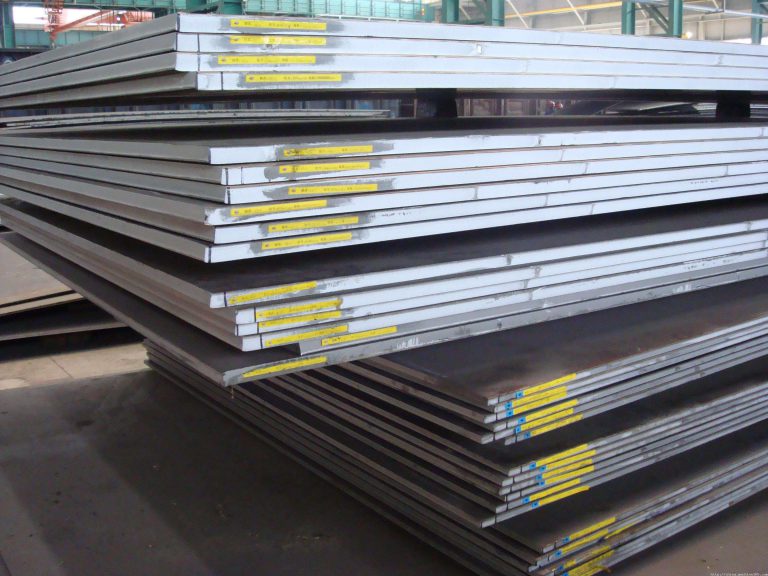asme sa 516 specification
SA516Gr.70 is widely used in petroleum, chemical, power station, boiler, and other industries used to make reactors, heat exchangers, separators, spherical tanks, gas tanks, liquefied gas tanks, nuclear reactor pressure shells, boiler drums, liquefied petroleum
Equipment and components such as gas cylinders, high-pressure water pipes of hydropower stations, and turbine volutes.
A516Gr70N meets the requirements of (ASME) ASTMA516/A516M standards, and fully meets the needs of oil gas with a high content of sulfur and hydrogen, reduces sulfur and hydrogen corrosion, reduces equipment maintenance, and increases equipment service life.
The steel plate has the following characteristics: good impact resistance, low-temperature deformation, good welding performance, good fatigue resistance, good anti-layer cracking performance, microalloying, high purity, low carbon equivalent, strong resistance to sulfur and hydrogen,
The products have good dimensional tolerances and surface quality.
We are ASME SA516 Gr.70 and ASME SA516GR.70 steel plate manufacturers,SA516GR.70 stocklist, SA516GR.70 cutting parts, SA 516 GR 70 machined parts supplier. Gangsteel exporter ASME SA516 Grade 70|ASME SA516GR.70 steel plate. SA516GR70 is a carbon pressure vessel steel grade. ASME SA516 GR.70 steel plates stock supplier.Keywords: ASME A516 Grade 70, ASME A516GR.70, ASME A516GR70, ASME A516 GR.70 SA516 Grade 70 steel is a carbon pressure vessel steel grade for moderate and lower temperature service.
SA516 Grade 70 usual request normalized if thickness above 40mm, if not, Gangsteel usual delivery in hot rolled or control rolled station. A516 Gr.70+N or A516gr70N mean that steel grade must be normalized in any thickness.

When carbon metal is heated into the austenite range—after which cooled without any alloy current to keep the austenite form—the microstructure reverts to the ferrite form. However, if the carbon content is greater than 0.006%, the excess carbon atoms combine with iron to type a chemical compound known as iron carbide , also called cementite. Cementite doesn’t happen on its own because a few of the materials will remain in ferrite form. Surgical instruments and medical equipment are often made from chrome steel, due to its sturdiness and ability to be sterilized in an autoclave.
In addition, as iron oxide occupies a bigger quantity than the unique metal, this layer expands and tends to flake and fall away, exposing the underlying metal to further attack. This passive movie prevents further corrosion by blocking oxygen diffusion to the metal floor and thus prevents corrosion from spreading into the majority of the metal.
Heat treatment
1.·SA515Gr60, SA515Gr70, SA516Gr60, SA516Gr70, SA516Gr60N, SA516Gr70N thickness ≤1.5in, (40mm) steel plate is usually supplied in rolled state, steel plate can also be ordered by normalizing or stress relief, or normalizing plus stress relief.
2. Thickness>1.5in.(40mm) steel plate should be normalized.
3. Unless otherwise specified by the buyer, the thickness ≤ 1.5in, (40mm) steel plate, when notch toughness is required, normalizing should be carried out.
4. If approved by the buyer, it is allowed to use a cooling rate greater than that in the air to improve toughness, but the steel plate only needs to be in the range of 1100-1300°F (595-705°C) subsequently
The tensile strength of SA516Gr70 is 70 kilopounds per square inch, which is more than 482 as everyone usually says.
The main element content is C Mn Si, and the control of p and s determines its performance.
There are very few other trace elements.
Standard Specification for Carbon Steel Plates for Medium and Low-Temperature Pressure Vessels
SA516Gr70 Chemical detail
C≤0.30��Mn��0.79-1.30��P≤0.035��S��≤0.035��Si��0.13-0.45
SA516Gr70 Property Grade U.S (SI), Tensile strength ksi(MPa) 70 (485) and 70-90 (485-620)
The minimal 10.5% chromium in stainless steels offers resistance to approximately 700 °C (1,300 °F), whereas 16% chromium provides resistance as much as approximately 1,200 °C (2,200 °F). Type 304, the commonest grade of chrome steel with 18% chromium, is proof against roughly 870 °C (1,600 °F). Other gases, such as sulfur dioxide, hydrogen sulfide, carbon monoxide, chlorine, additionally attack stainless-steel. Resistance to other gases depends on the kind of fuel, the temperature, and the alloying content material of the chrome steel. Ferritic stainless steels possess a ferrite microstructure like carbon steel, which is a physique-centered cubic crystal structure, and comprise between 10.5% and 27% chromium with little or no or no nickel.
- Type 304, the most typical grade of stainless steel with 18% chromium, is immune to roughly 870 °C (1,600 °F).
- This microstructure is present in any respect temperatures as a result of chromium addition, so they aren’t hardenable by heat therapy.
- Resistance to other gases depends on the kind of gas, the temperature, and the alloying content material of the stainless-steel.
- The minimum 10.5% chromium in stainless steels provides resistance to approximately seven hundred °C (1,300 °F), while 16% chromium provides resistance up to roughly 1,200 °C (2,200 °F).
- Other gases, corresponding to sulfur dioxide, hydrogen sulfide, carbon monoxide, chlorine, also attack stainless-steel.
asme sa516 grade 70 cutting parts
They are used for collector, tubing, muffler, catalytic converter, tailpipe. Heat-resisting grades EN1.4913 or 1.4923 are utilized in components of turbochargers, while different warmth-resisting grades are used for exhaust gas recirculation and for inlet and exhaust valves.
What is the difference between ASTM and ASME SA?
ASME = American Society for Mechanical Engineers. ASME standards will establish the dimensions and tolerances for most commonly used items with respect to each material class, whereas ASTM establishes quality for materials which are to be used in products which are described in ASME.
Austenite is a microstructure that’s fashioned when iron based mostly alloys are heated above 1500˚F but beneath 1800˚F. If the correct alloy is present in the sa516gr.70 steel supplier metal, such as nickel, the fabric will keep this microstructure even when cooled. The attribute shape of austenite is a face-centered cubic crystal structure.
This movie is self-repairing, even when scratched or briefly disturbed by an upset situation in the environment that exceeds the inherent corrosion resistance of that grade. Stainless steel is now used as one of the supplies for tramlinks, along with aluminium alloys and carbon steel.
